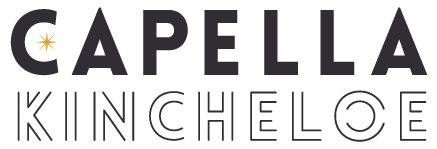Utilize a Call-to-Action on Interior Design Website
What is a call-to-action?
There is one thing that can help provide a bridge between visitors to your website and those that become clients - a call-to-action (CTA).
Today, I am going to share how to utilize a call-to-action for interior design websites. This is something that I see many design websites missing. But it can make a big difference in the number of inquiries you receive.
So what is a call-to-action? It’s sharing with your potential clients what the next step is for them to take. Usually, it’s short and sweet:
Call Now
Book Now
Book Consultation
Schedule Appointment
Get in Touch
Learn More
Schedule Discovery Call
Complete Questionnaire
Discover Services
Get Started
Sign Up
Subscribe
Buy Now
Start Designing Dream Home Now
Sometimes it shows up in the form of a button or a hyperlink to perform that action. So “Book Consultation” will likely direct to a scheduling page to complete booking. “Call Now” could direct to your contact page with your phone number or it could cause the Facetime app to open on their computer/phone.
“Learn More” may redirect to your services page on your website that has another CTA encouraging them to “Schedule Discovery Call”.
How to Use a Call-To-Action
Now that you know what a call-to-action is, you’ll likely see them everywhere - maybe everywhere except your website.
But it’s important to lead people to the next step. Tell them what to do. It’s amazing to me how much this little instruction makes a psychological difference. And it does make a difference.
Even if it seems like the next step is obvious or you have your Contact page in your main menu. Leading people to where you want them to go will result in more actions that you want them to take.
You may have multiple CTAs on your website, but I recommend at least having one. The one that begins the process of them becoming a client. So I urge you to ask yourself, now that they’ve visited my website, what is the next step I want them to take to begin my onboarding process?
“Now that they’ve visited my website, what is the next step I want them to take to begin my onboarding process?”
Maybe you want them to know a bit more about you and your business before contacting you. So you direct them to your services page or about page before offering them another CTA - contacting you.
Perhaps it’s emailing. Or calling. Or scheduling a call.
Maybe you want them to sign up for your newsletter to gain trust and credibility.
Or, if you offer packages, maybe you want them to buy one of your packages.
You could have a prospective client intake questionnaire on your site before you call them.
Maybe you have a next steps page outlining what the process looks like and so your CTA directs them there to learn about the next steps.
Call-to-Action Best Practices
Your website is a stand-in for you. I like to think of a website leading visitors on a journey through it. Tell them where to explore next and what to do. You can’t personally lead each visitor through your site, so use CTAs to do that work for you.
Your first/primary CTA should be on your homepage. But not too close to the top - this can feel too soon or abrupt - give visitors some time to get to know you (through their scrolling) before your CTA.
If your page is especially long, you can have two (or three!) of the same CTAs on the page. Some people need more time to commit and will scroll longer than others.
Watch out for pop-ups. Usually, they arrive too soon and are not your primary CTA. This means visitors close them/ decline and that sets a precedent for more declines rather than yesses.
CTAs can be done elegantly so they feel natural on your website.
Share in the comments what your first Call-to-Action is on your website! Are you using it to its best advantage?
About The Author
Hi! I’m Capella and I’m an interior designer who helps fellow designers build their businesses. Forget secrecy and competition, I believe designers should support and uplift each other. By helping and boosting one another, we can elevate the business of interior design together! Hang around a bit and I’ll share all the business “secrets” no one else wants to talk about.




